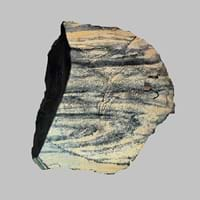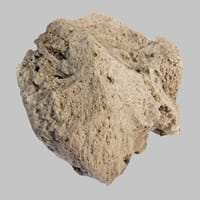Definition
Oil Shale is a fine-grained sedimentary rock from which oil is extracted
Pumice is a volcanic rock that consists of highly vesicular rough textured volcanic glass, which may or may not contain crystals
Discoverer
Unknown
Unknown
Etymology
From Old English scealu in its base sense of thing that divides or separate
From Old French pomis, from a Latin dialect variant of pumex
Class
Sedimentary Rocks
Igneous Rocks
Sub-Class
Durable Rock, Soft Rock
Durable Rock, Medium Hardness Rock
Group
Not Applicable
Volcanic
Other Categories
Fine Grained Rock, Opaque Rock
Fine Grained Rock, Opaque Rock
Texture
Splintery
Vesicular
Color
Black, Brown, Buff, Green, Grey, Red, Yellow
Beige, Colourless, Grey, Light Green, Light Grey, Pink, White, Yellow- grey
Durability
Durable
Durable
Appearance
Muddy
Vesicular
Interior Uses
Not Yet Used
Decorative Aggregates, Flooring, Homes, Interior Decoration
Exterior Uses
Not Yet Used
As Building Stone, As Facing Stone, Garden Decoration, Paving Stone
Other Architectural Uses
Not Yet Used
Curbing, Powder
Construction Industry
Cement Manufacture, Construction Aggregate, for Road Aggregate, Serves as an Oil and Gas Reservoir rock
As Dimension Stone, Cement Manufacture, for Road Aggregate, In landscaping and horticulture, Making natural cement, Production of lightweight concrete blocks
Medical Industry
Not Yet Used
As an abrasive in skin exfoliating products, In Chemical and Pharmaceutical Industry, Medicines and Cosmetics
Antiquity Uses
Artifacts
Artifacts
Commercial Uses
An Oil and Gas Reservoir
As a traction material on snow-covered roads, As an abrasive in pencil erasers, Fine abrasive used for polishing, Manufacture of Soap, Solvents, Dyes, Plastics and Fibres, Used in aquariums
Types
Carbonate-rich Shale, Siliceous Shale and Cannel Shale
Scoria
Features
Easily splits into thin plates, Generally rough to touch, Is one of the oldest rock, Very fine grained rock
Host Rock for Lead
Archaeological Significance
Monuments
Not Yet Used
Not Yet Used
Famous Monuments
Not Applicable
Not Applicable
Sculpture
Not Yet Used
Not Yet Used
Famous Sculptures
Not Applicable
Not Applicable
Pictographs
Not Used
Used
Petroglyphs
Not Used
Used
Figurines
Not Yet Used
Not Yet Used
Formation
Oil Shale forms on the beds of seas and lakes and its formation starts with the organic debris settling and accumulating at the bottom of a lake or sea which are then transformed into rock with the help of high temperature and pressure.
Pumice rock forms when the magma cools so quickly that atoms in the melt are not able to arrange themselves into a crystalline structure.
Mineral Content
Albite, Biotite, Calcite, Chert, Chlorite, Dolomite, Hematite, Micas, Muscovite or Illite, Pyrite, Quartz, Silica, Sulfides
Aluminum Oxides, Calcite, Carbonate, Iron Oxides, Silica
Compound Content
Ca, Fe, Mg, Silicon Dioxide, Sodium
Al, Aluminium Oxide, CaO, Carbon Dioxide, MgO, Silicon Dioxide
Types of Metamorphism
Not Applicable
Burial Metamorphism, Impact Metamorphism
Types of Weathering
Biological Weathering, Chemical Weathering, Mechanical Weathering
Biological Weathering, Chemical Weathering, Mechanical Weathering
Types of Erosion
Chemical Erosion, Sea Erosion, Water Erosion
Chemical Erosion, Coastal Erosion, Glacier Erosion, Sea Erosion, Water Erosion, Wind Erosion
Grain Size
Very fine-grained
Fine Grained
Fracture
Not Available
Planar
Streak
White
White, Greenish White or Grey
Porosity
Highly Porous
Highly Porous
Compressive Strength
Not Available
Specific Gravity
2.2-2.8
2.86
Transparency
Opaque
Opaque
Density
2.4-2.8 g/cm3
0.25-0.3 g/cm3
Resistance
Heat Resistant, Impact Resistant
Impact Resistant, Pressure Resistant
Deposits in Eastern Continents
Asia
Bangladesh, China, India, Israel, Jordan, Russia, Syria, Thailand, Turkey
Afghanistan, Indonesia, Japan, Russia
Africa
Ethiopia, Kenya, Morocco, South Africa, Tanzania
Ethiopia, Kenya, Tanzania
Europe
Austria, France, Germany, Greece, Italy, Romania, Scotland, Spain, Sweden, Switzerland
Greece, Hungary, Iceland, Italy, Turkey
Others
Greenland, Not Yet Found
Not Yet Found
Deposits in Western Continents
North America
Canada, USA
Bahamas, Barbados, Canada, Costa Rica, Cuba, Jamaica, Mexico, USA
South America
Bolivia, Brazil, Chile, Colombia, Ecuador, Peru, Venezuela
Argentina, Chile, Ecuador, Peru
Deposits in Oceania Continent
Australia
New South Wales, New Zealand, Queensland, Victoria, Western Australia
New Zealand, Western Australia
All about Oil shale and Pumice Properties
Know all about Oil shale and Pumice properties here. All properties of rocks are important as they define the type of rock and its application. Oil shale belongs to Sedimentary Rocks while Pumice belongs to Igneous Rocks.Texture of Oil shale is Splintery whereas that of Pumice is Vesicular. Oil shale appears Muddy and Pumice appears Vesicular. The luster of Oil shale is dull while that of Pumice is earthy. Oil shale is available in black, brown, buff, green, grey, red, yellow colors whereas Pumice is available in beige, colourless, grey, light green, light grey, pink, white, yellow- grey colors. The commercial uses of Oil shale are an oil and gas reservoir and that of Pumice are as a traction material on snow-covered roads, as an abrasive in pencil erasers, fine abrasive used for polishing, manufacture of soap, solvents, dyes, plastics and fibres, used in aquariums.










